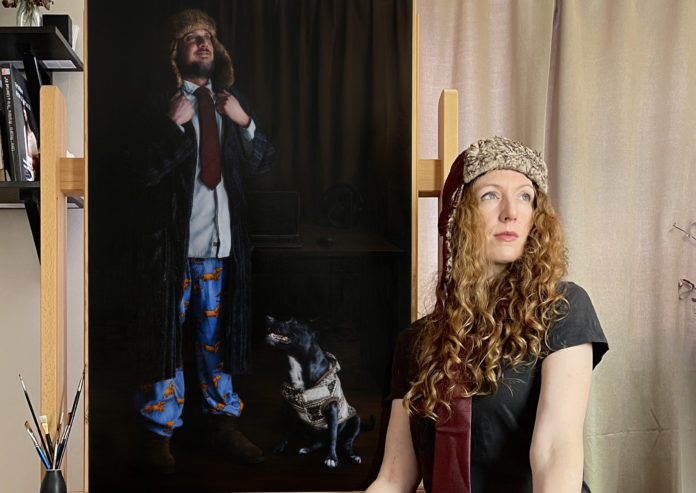Realism Art How-To: Australian realist painter Narelle Zeller shares her inspiration for “Brave New Worker,” and her step-by-step process for creating it.
Contemporary Realism Art: “Brave New Worker”
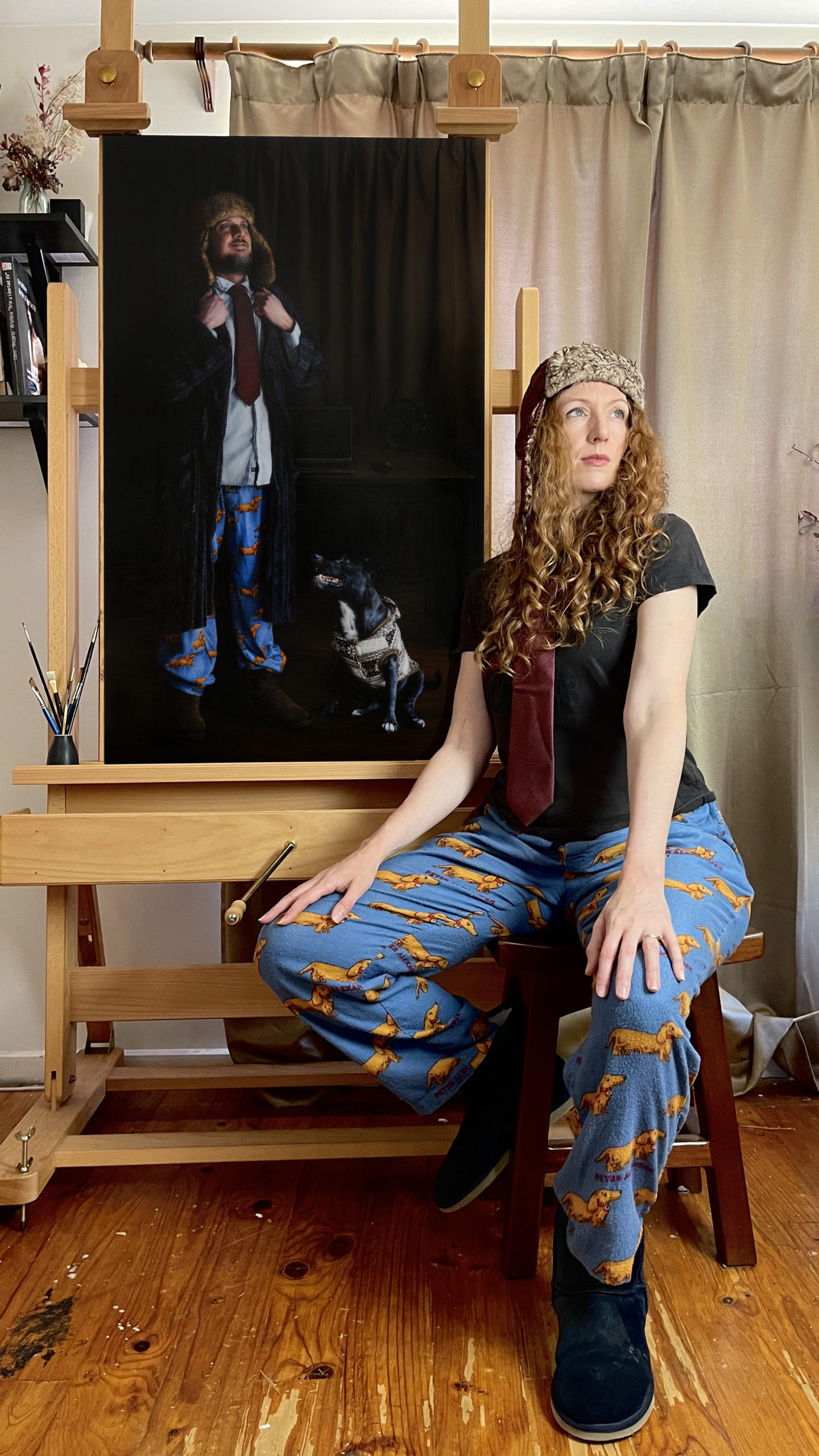
BY NARELLE ZELLER
My Painting Process
My process is an ever-evolving fusion of technique learnt through various workshops and mentorships, along with self-driven exploratory evolution. I continuously experiment with new materials, and approach my artistic visions in different ways in response to what I think would complement the piece or a challenge that I would like to explore in the painting. Each painting informs the next in some way. The learning path as an artist is never ending and exciting!
Panel Preparation
Aluminum composite panel has been my substrate of choice for most of my paintings so far. It is affordable, lightweight, rigid, and very smooth to work on. I enjoy creating my own texture in a painting so it works very well for me. The panel is cut to size, finely sanded and primed using multiple layers of gesso.
Rather than starting on a white surface, I usually paint the panel with a mid-value base colour. In this painting I used a warm grey oil colour mixed with Liquin to tone the panel.
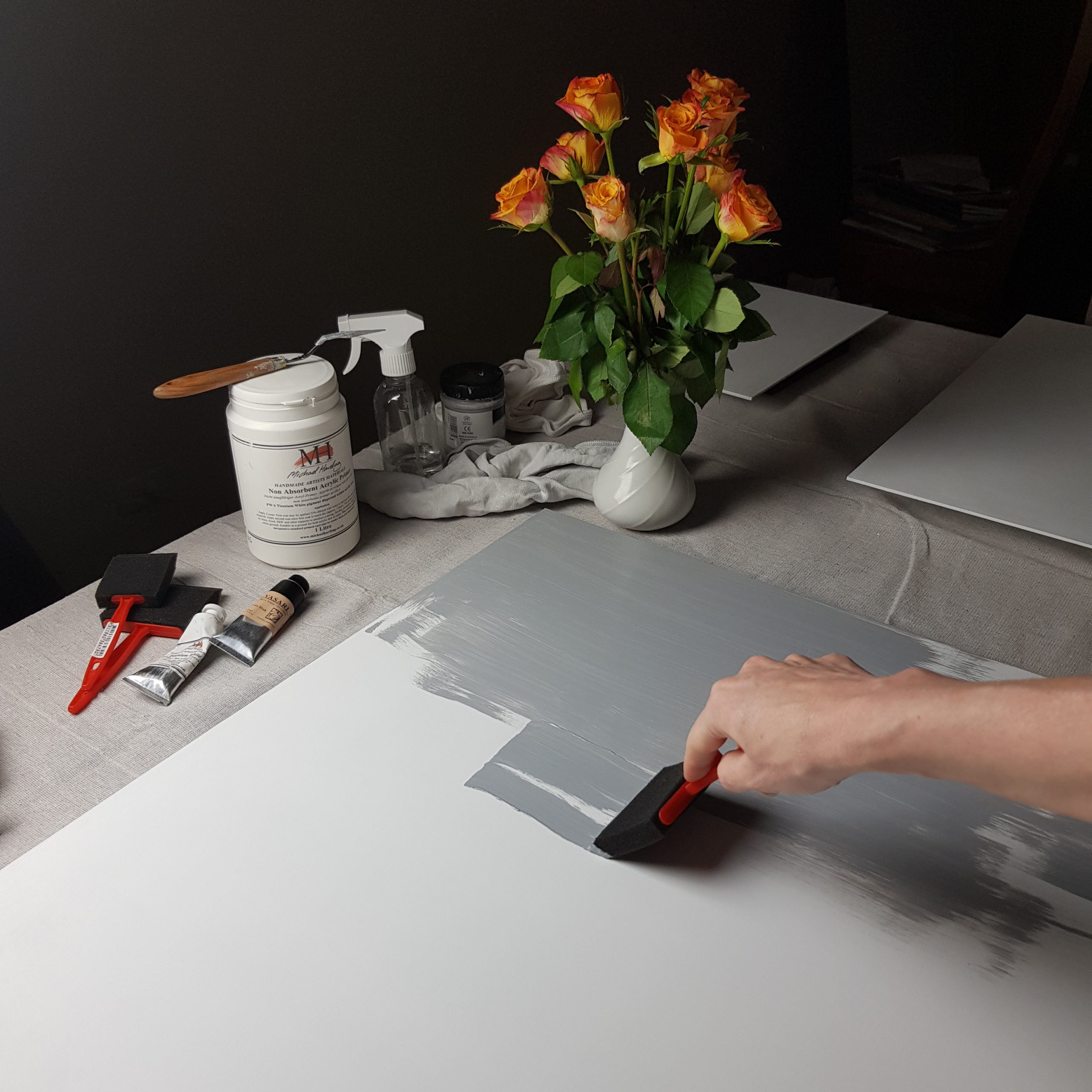
Drawing
I start with quite a detailed line drawing for each of my paintings. Depending on how involved the piece is, it is either transferred on with graphite or drawn straight onto the panel with Pan Pastel or a Faber-Castell Polychromos pencil. For the more intricate pieces graphite transfer is my preferred method, and I keep the line drawing as light as possible to easily conceal as I paint.
First Layer
This is the slowest stage in my process but probably my favourite part. I work around the painting slowly, meticulously working on each element with an aim to get it close to what I want to achieve in both colour and detail. I love bringing each form into 3D existence from a flat 2D line drawing.
Every painting is different but I typically start by choosing an area to establish the darkest dark and lightest light in the painting. This is so I can easily see the value relationships within that range as I move around the painting. For this painting I chose to get the large dark background elements in first. I then moved on to the dog, as even though she is quite dark she also has some of the lightest elements.
I use oil paint with no medium in this initial layer. I want to get a good foundation of paint and detail on the panel to work from in the later stages.
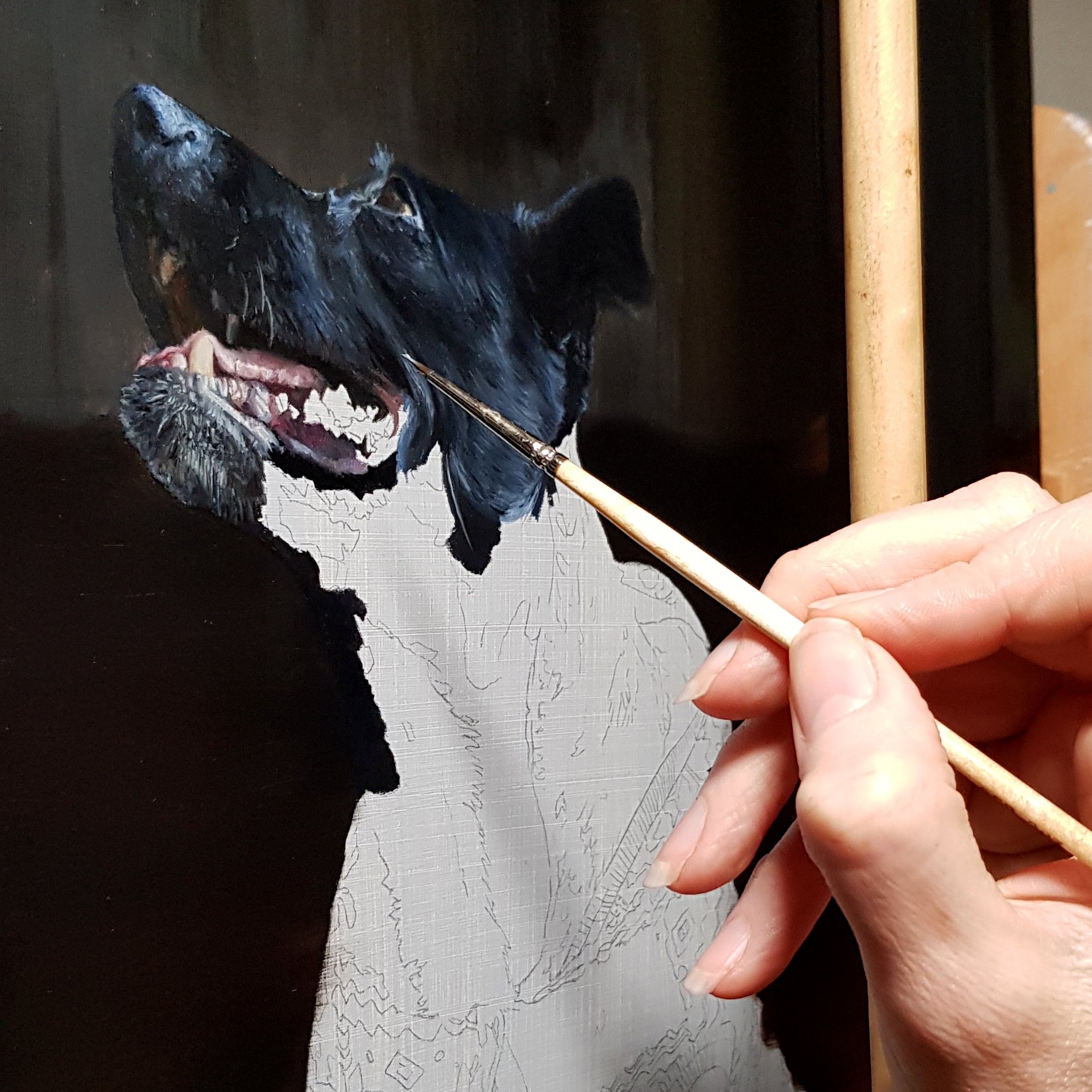
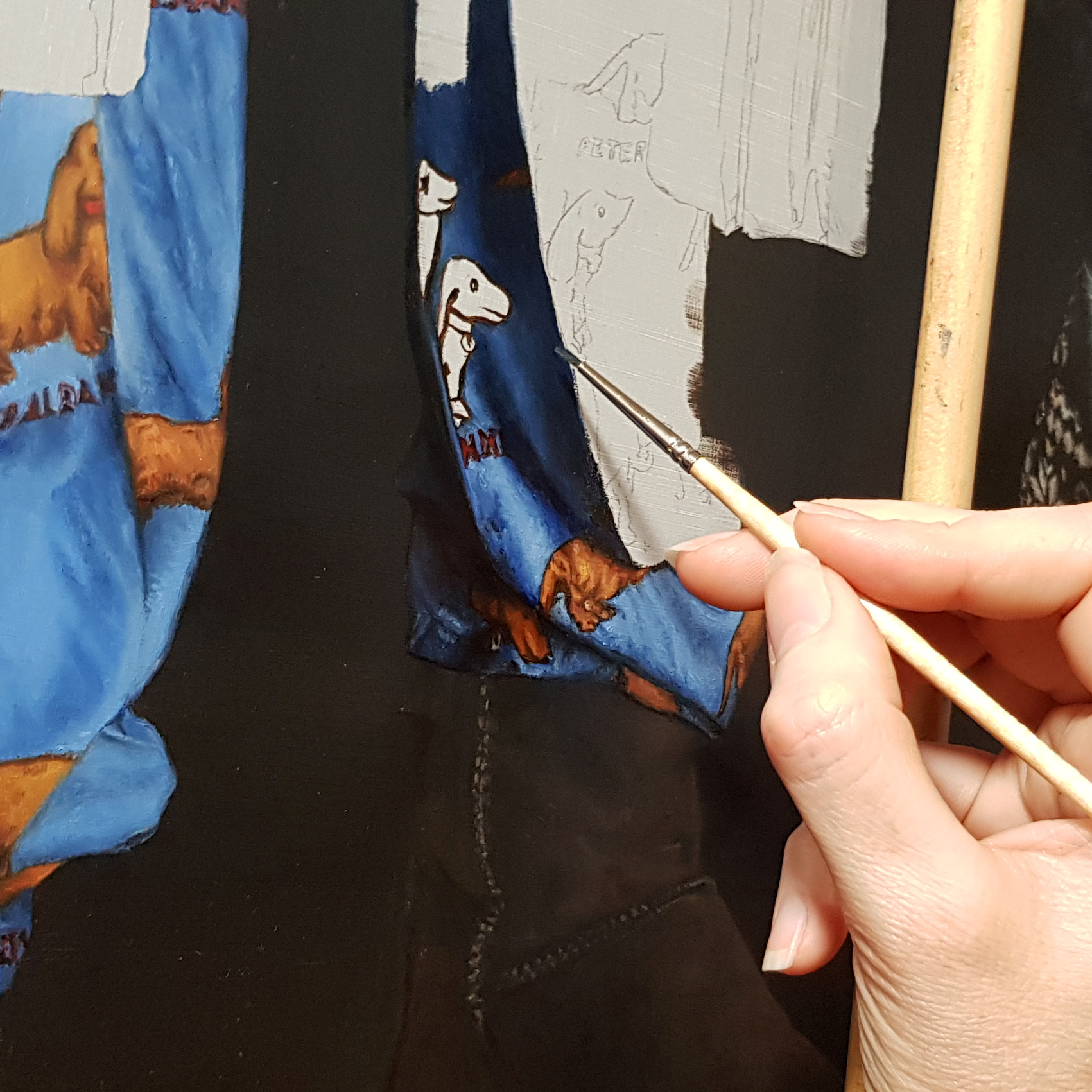
Second layer
Whilst I can get a good result from the initial layer, it is in the second layer that I can really bring the painting to life. I find there is a translucency to human skin that only multiple layers of oil paint will achieve (see image below from first layer to final layer). I use more transparent pigments in this layer, along with some medium for glazing.
Now that I have a detailed map of information on the panel, I can step further away from any photographic references and look to what the painting really needs as a whole. I can alter all of the relational notes of chroma and value so they play off each other and sing together.
Elements are given more dimension and presence in the painting with shadows and highlights. Edges are softened and blended into layers behind or sharpened to pull them forward, adding to the intended visual hierarchy. Colour is added or adjusted and subtly glazed throughout in both light and dark areas.
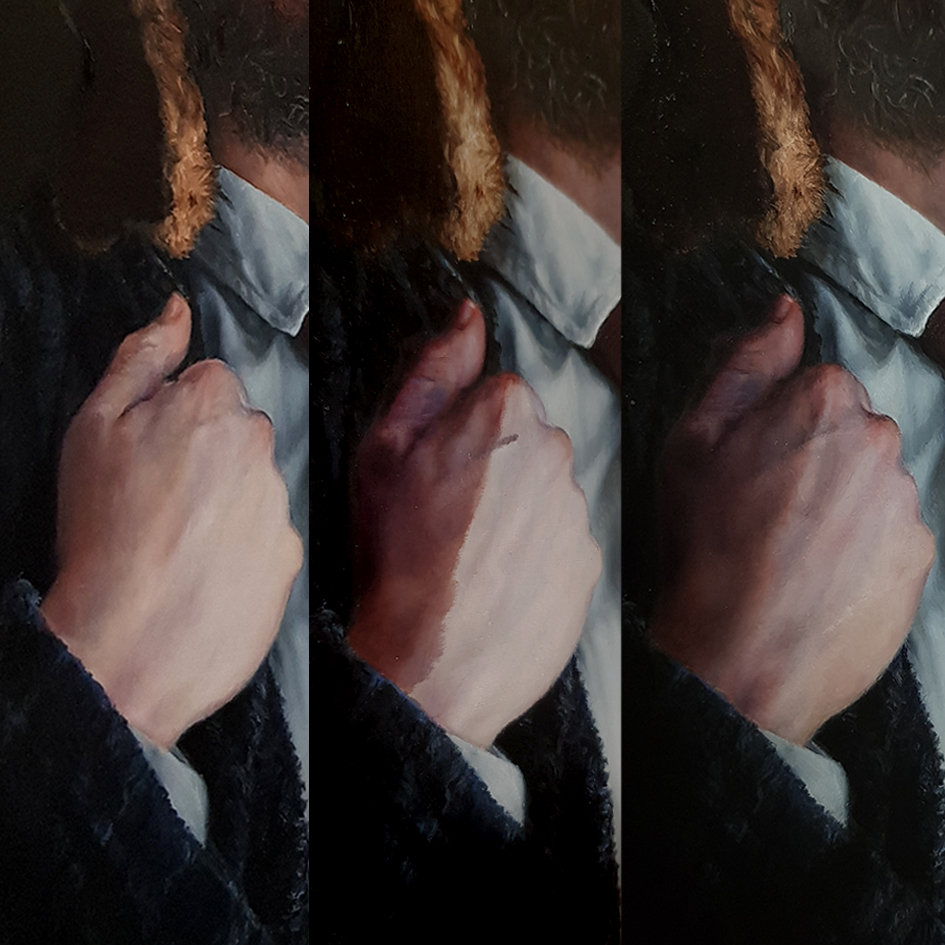
Final Touches
I wish I could say that I always get my paintings to a point where I am happy with them in two layers, but more often than not they need more work. Sometimes whole areas need reworking. Sometimes just highlights and small touches of glazing are enough, but there is always more. I stop when I feel I am no longer making improvements to the painting.
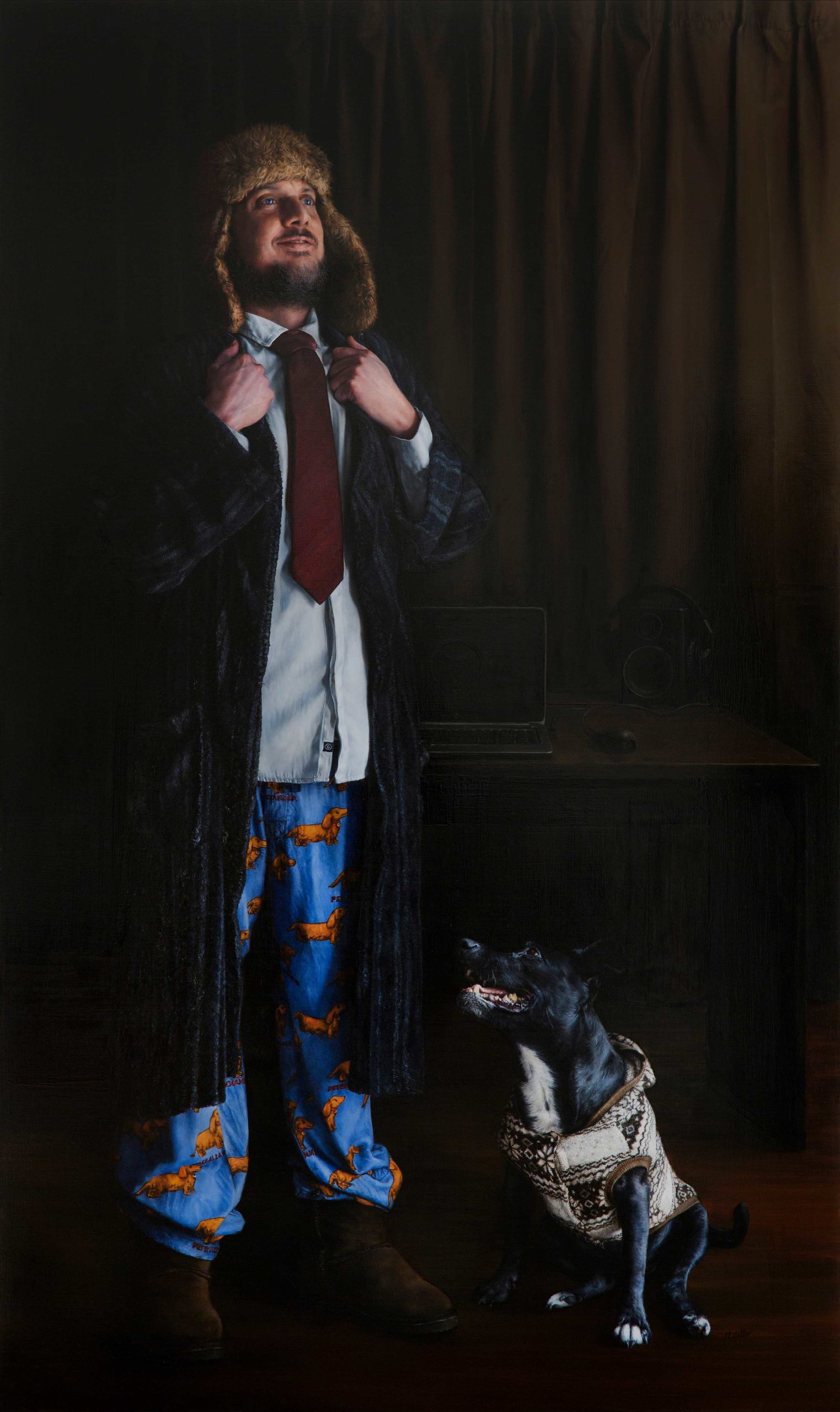
Inspiration for this piece came one winter morning when I saw my husband Sam standing by the window light. Looking upwards with his hair unkempt and grown freely, he stood rugged up and comfortable in his pyjamas and dressing gown, but ready for that inevitable Zoom meeting.
Adoring the abundance of company, our dog Boo sat by his side. This is a 2020 portrait of working from home during lockdown. It is about finding and embracing the positives that imposed change can bring amongst difficult circumstances. It is about appreciating the little things, spending more time with family and importantly an ode to day-pyjama wear.
Watch the process video here:
Connect with Narelle Zeller:
Website | Instagram
> Visit EricRhoads.com (Publisher of Realism Today) to learn about opportunities for artists and art collectors, including:
- Art retreats
- International art trips
- Art conventions
- Art workshops (in person and online)
- And more!


